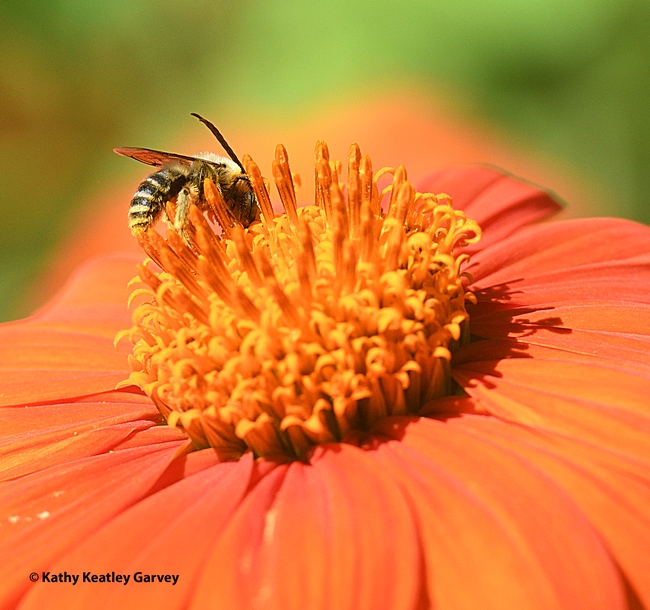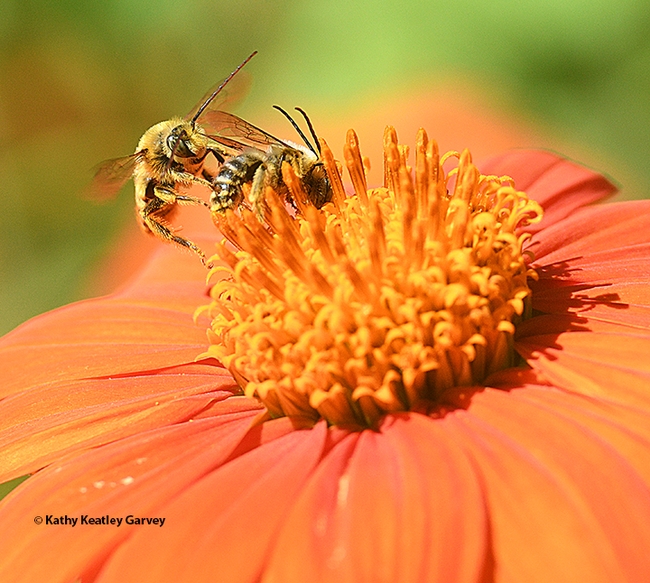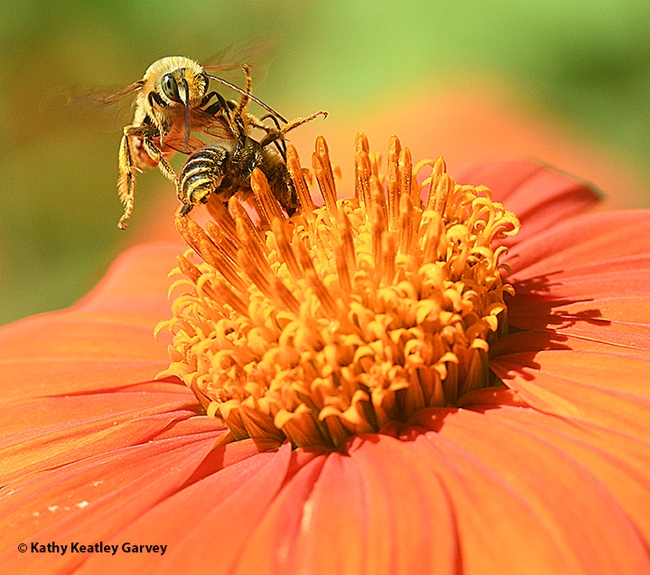Get off my turf!
The native bees known as Melissodes, the longhorned bees, start stirring in the early morning. First, they settle on a leaf or flower to warm up their flight muscles. Once ready to fly, they don't let up until late afternoon.
We look forward to seeing them forage and battle one another in our Mexican sunflower (Tithonia rotundifola) patch, a key part of our Vacaville pollinator garden.
The males are extremely territorial and try to bop other insects off "their" flowers. That includes bumble bees, butterflies and males of their species. Sometimes they aim for a spider or praying mantis on their real estate. Sometimes they lose. Why are the males such bee boppers? To protect their turf, according to the lateRobbinThorp, UC Davis distinguished emeritus professor. They are trying to save the resources for the females per chance to mate with them.
If you have a camera that will allow you to set a fast shutter speed, such as 1/8000 of a second, sometimes you can freeze the action. Otherwise, they are an elongated blur as they whiz by, seemingly faster than the proverbial "speeding bullet."
The book, California Bees and Blooms, a Guide for Gardeners and Naturalists (Heydey 2014), co-authored by University of California scientists, offers a closer look at Melissodes.
California is home to more than "1600 hundred species of undomesticated bees—most of them native—that populate and pollinate our gardens, fields, and urban green spaces," according to the authors (Gordon Frankie, Robbin Thorp (1933-2019), Rollin Coville and Barbara Ertter.) They explored 22 most common genera (and six species of cuckoo bees), describing each one's distinctive behaviors, social structures, flight season, preferred flowers, and enemies.
One of them is the Melissodes agilis that we find in our garden.
Attached Images:

A male Melissodes agilis pauses to sip nectar from a Mexican sunflower, Tithonia rotundifola. (Photo by Kathy Keatley Garvey)

Get off my turf! A male Melissodes agilis bops another male of the species. (Photo by Kathy Keatley Garvey)

"I said get off my turf." The male Melissodes agilis trying to claim territorial rights.(Photo by Kathy Keatley Garvey)